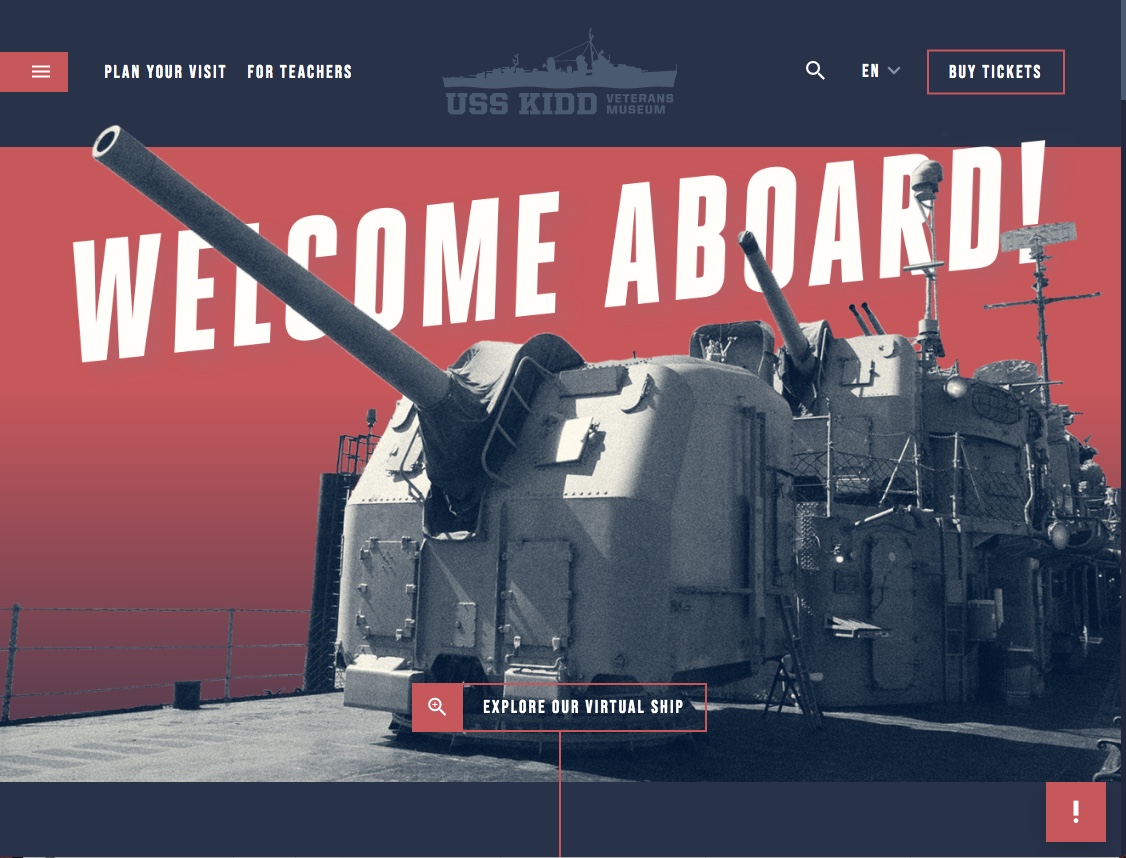
The U.S.S. Kidd is finding ways to preserve its archives and attract a new audience
The skyline of downtown Baton Rouge wouldn’t be complete without the U.S.S. Kidd. Floating on the edge of the Mississippi River, the 75-year-old Fletcher-Class destroyer is as integral a part of downtown’s history as the Old State Capitol and the Old Governor’s Mansion.
Yet its own history is rooted off the coast of Okinawa, Japan, where it was struck by a kamikaze plane on April 11, 1945, killing 38 servicemen and injuring several others.
Today, the U.S.S. Kidd and its Veterans Museum next door commemorate this story and others spanning the ship’s almost two decades of service. “She and her sisters have occupied a massive piece of history all the way around the world,” says the ship’s superintendent and educational outreach coordinator, Tim NesSmith.
|
|
But running a museum housed in an aging ship like this comes with a unique set of challenges.
As World War II veterans diminish along with the number of people in uniform, the museum has had to adapt to stay relevant and appeal to visitors who aren’t as connected to that military history. Personnel, finances, museum space and community support can at times be limited, so the team at the Kidd is exploring creative solutions to preserving history—and retaining visitors.

“We still commemorate, because that’s part of our role and part of our mission. But we need a new model for our museum in order to survive into the future,” says the Kidd’s former director, David Beard, who recently left the museum for a job out of state. “We’re just in the process of figuring out how to rebrand and maybe reinvent ourselves without losing ourselves. That’s the key, that’s the trick, and we’re not alone in this.”
As with so many other historic sites, the Kidd is making a push toward digital. There’s evidence of these efforts in its flashy new website created by local marketing agency Three Sixty Eight. Fresh features, including an interactive web tour, drone footage of the ship and an easy-to-navigate web platform, won the Kidd top honors this year during American Advertising Federation Baton Rouge’s ADDY Awards.
Museum officials say they are planning to introduce a virtual tour of the ship’s interior to the website using drone footage. “It’s all about relevancy,” NesSmith says. “Every museum must be relevant to its community. Otherwise, it’s no longer serving a function.”
Another plan is to digitize the ship’s archives and develop the museum’s educational and research component.
The ship is currently home to pages and pages of documents such as diagrams, blueprints and manuals. And just like a deep spring cleaning of your home requires making a giant mess first, the Kidd’s digitization process will require more personnel and space to organize everything.
For now, the staff of mostly part-time employees is attempting to remove these documents from the ship and store them in a safer environment.
But the struggle for space—both for the documents and the museum’s expanding collection of artifacts—has sparked some innovation for the team.

The Veterans Museum’s largest exhibit features a Hall of Honor, memorializing major Louisiana service members. Beard says the staff has considered consolidating several items for a kiosk display to make room for rotating and traveling exhibits. This would provide locals and travelers incentives to make repeat visits.
Implementing these technological advances requires more community and financial support. And to inspire this support, the team at the Kidd is counting on the ship’s educational value.
“The interesting thing about the Kidd is that she was a multitool for the navy,” NesSmith says. “And her mission here is no less multifaceted.”
Although the Kidd doesn’t have a direct historical connection to the city or state, Beard and NesSmith say it has broader relevance—especially as the World War II generation continues to disappear.
“She can teach our kids and our adults about history. She can teach them about geography,” NesSmith says. “She’s a portal to be able to discuss the artwork and music of the different cultures that she and her sisters visited around the world.”
As the Kidd tackles a host of updates and improvements, its leaders say the mission won’t change: to preserve memories of veterans long after they’re gone. usskidd.com
This article was originally published in the July 2019 issue of 225 Magazine.
|
|
|
